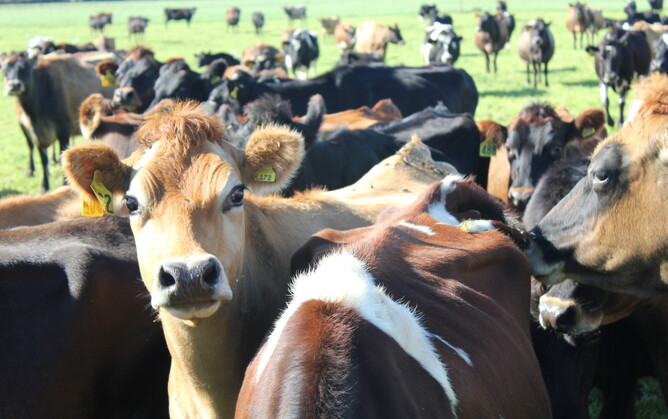What are dairy farm capital values most sensitive to?
Research conducted in relation to the impact of farm commodity prices on farm land values shows time and again they often have only a limited, or even no effect. So, what might be the reasons for this?
Rural land values - a long term view adopted by stakeholders?
First of all, in thinking about this relationship, those in the rural land market probably tend to take a long-term view of prices received for products being produced on farm. This is because unlike commodities, farms tend to be traded quite rarely. Therefore, any relationship with prices received (and therefore income capable of being earned from the property), is logically based on a longer-term view that smooths out short term commodity price volatilities. This might help explain why rural farmland values tend to be much more stable over time compared to most other property types.
Secondly, farm lands are almost inevitably capable of being employed for a wide variety of land uses. This is in contrast to say, an office block, or a warehouse, where typically there is just one, or limited use. They often have appeal to just one, or perhaps only a few market segments. This is an important consideration since most property types, other than single residential homes, tend to be utilised in ways designed to achieve maximum economic gain. In property economics this is referred to as the “highest and best use” which in the case of farm lands, is often debateable. Therefore, commodity prices typically have little impact on property values as there is typically an inherent ability to swap or change land usage in concert with the prevailing industry outlook.
Are dairy farms any different to other types of farming enterprises?
Even dairy farms – despite having arguably greater homogeneity, given the scale and nature of required development – tend to follow these general principles. Perhaps we can feel buoyed by this, as it explains why, when milk solid prices were at an all-time low over the last few seasons and many dairy farms could not be operated profitably, there was not an accompanying groundswell of farms up for sale, or otherwise being foreclosed. Indeed, if dairy farm land values were based on commodity prices or short-term earning income capacity, then an invidious position would have resulted where such properties could not even perhaps be given away. Thankfully, this has not happened. Nor is it likely.
Nonetheless, in the case of dairy farms, it is possible to model the potential impact of certain key drivers. These include estimated long-term commodity prices, stocking rate intensity, capitalisation rate, and “steady state” milk production productivity.
For example, consider the impact of depressed long-term milk solid prices. It can be demonstrated that for every $1.00 decrease per kg received, the capital value of that farm is impacted negatively at around $13,000 per hectare. For a typical larger sized dairy farm in Canterbury, this would amount to over $5m.
If restrictions on land use were imposed thereby limiting the stocking rate (as might occur under nutrient regulations), a forced reduction of only five (5) stock units per hectare overall would also result in a reduction in property value of over $5m. To put this in perspective, this is equivalent to the number of cows in the herd reducing from say 3.2 to 2.7 cows per effective hectare. Conversely, if without changing to a more intensive system, the enterprise could lift its productivity, then theoretically there would be a corresponding increase in property value. For Canterbury, these increases or decreases equate to roughly $3,000 per hectare for every stock unit increase.
Capitalisation rate impact and considerations
The capitalisation rate is also critical. Basically, this is the rate at which estimated net farm income may be “capitalised” in order to achieve open market value. Our $5m reduction in value might be achieved where the capitalisation rate increases by 2.75%. Conversely, a capitalisation rate of 1.5% less results in an increased property value of a similar quantum.
Finally, we have the matter of productivity, or milk production. Our $5m reduction in farm value can be calculated to occur when there is a 45 kg milk solids per cow per annum reduction in productivity. Or, put another way, over $1m overall decrease in farm value for every 10kg of reduced production per cow p.a.
Conclusions
Whilst the indicators quoted above are calculated for a typical Canterbury dairy farm, they are probably more broadly indicative, and serve to highlight those factors farm values are most sensitive to. However, it should be recognised that capital value estimating is a very complex business. It is also one that attempts to interpret and quantify that most complex factor of all – the conduct of human beings!


